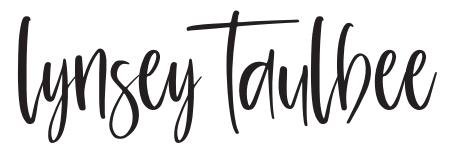Starting a Flower Farm: First Season Costs and Expenses (It’s Less Than You Think)
So, you want to start a flower farm! Your mind is probably buzzing with all the exciting possibilities—envisioning a beautiful barn for workshops, rows of perfect flower beds, a small peony field, and a section of perennials to complement your annuals. You’re ready to hit the ground running to turn that vision into your reality.
But wait! 🛑
Let’s pause for a moment and rethink the plan.
Imagine your child tells you they want to learn how to ski. Would you immediately buy them brand-new skis, boots, goggles, and a fancy annual pass to Vail? Of course not. You’d rent skis for the day or borrow gear, head to a local hill, and see if they even like skiing before investing more.
The same logic applies to starting a flower farm. Your first season should be about testing the waters—not jumping in headfirst with huge investments.
The Goal of Your First Season: Test the Market
The main focus of your first season isn’t to build your dream farm; it’s to validate demand. You need to figure out if people in your community actually want to buy your flowers—and if they’re willing to pay for them.
Without demand, your flower farm will remain just a beautiful (and expensive) hobby. Proving there’s a market for your flowers is crucial before making big investments in infrastructure, tools, or crops.
Here’s how you do it: create a "minimally viable product" (MVP), like a simple mixed bouquet, and sell it. Gather feedback, see what resonates with your audience, and refine your offerings based on what works. This trial run also lets you decide if you even enjoy flower farming. Because let’s be honest, 90-degree heat and bugs crawling up your shorts isn’t for everyone!
(This process of testing and validating demand is something I cover in Muddy Business, my program designed for new flower farmers. It walks you through creating a "minimally viable product" (MVP) and figuring out what works for your market.)
And most importantly, you want to do all this with minimal upfront costs.
Start Simple: Grow Annual Flowers from Seed
To keep costs low, focus on growing annuals from seed—preferably flowers you can direct sow, so you don’t have to invest in seed-starting supplies. Some excellent options include sunflowers, cosmos, zinnias, celosia, calendula, bachelor buttons, phlox, marigolds, and nigella.
The best part? These flowers thrive in poor soil, meaning you can skip expensive compost or soil amendments for now. Yes, I said it: skip the soil test. Why spend money improving your soil if you don’t know whether you’ll even grow flowers next year?
How Much Does It Really Cost to Start a Flower Farm?
When you’re just starting out, the goal is to keep your initial costs as low as possible while testing the market. Here’s a breakdown of your likely expenses for the first season:
Seeds: Stick with easy-to-grow varieties you can direct sow to avoid seed starting indoors. If you followed this field plan, the cost of seeds is around $300 plus shipping.
Tools: You’ll need basic tools like a shovel and hoe. Chances are, you already have these on hand.
Rubber Bands and Sleeves: Simple, inexpensive packaging for your bouquets. $50
Branding: You can create a free logo on Canva and use a logo stamp and ink pad. $50
Harvesting: You can usually find free buckets if you don’t already have some from your grocery store’s floral department and my favorite snips are less than $15.
Marketing: Social media is free and you can utilize my link for 50% off your first year of Flodesk for email marketing. $19
Soil Prep: Basic materials to make your ground plantable. Costs vary, but expect around $100
Hose and Sprinkler: Essential for watering your flowers. If you don’t already have these, they’ll cost about $50.
Total Estimated Cost: Less than $600
It doesn’t take much to get started! What does cost a lot is building your dream farm before testing the waters. It’s tempting to jump in headfirst, investing in bulbs, roots, perennials, hoop houses, tractors, and coolers. But here’s the truth: you don’t need any of these things in your first season.
Focus on Building Your Flower Farm Market Before Scaling
The most important goal of your first season is to find your customers. Are people in your community willing to buy your flowers? Once you validate demand, you can confidently scale up your business—investing in tools, infrastructure, and expanding your flower offerings.
It’s tempting to dive headfirst into your dream farm, but resist the urge to make big purchases right away. This first season is about gathering data, learning what works, and deciding if flower farming is truly your passion.
Starting a flower farm is an exciting journey, but it doesn’t have to be an expensive one. Focus on testing the market, growing simple annuals, and keeping costs low in your first season. By taking it slow and steady, you’ll set yourself up for success and ensure your dream flower farm becomes a sustainable reality.
For a detailed list of flower farming expenses (aka tax write-offs), be sure to download our free tax resource.






